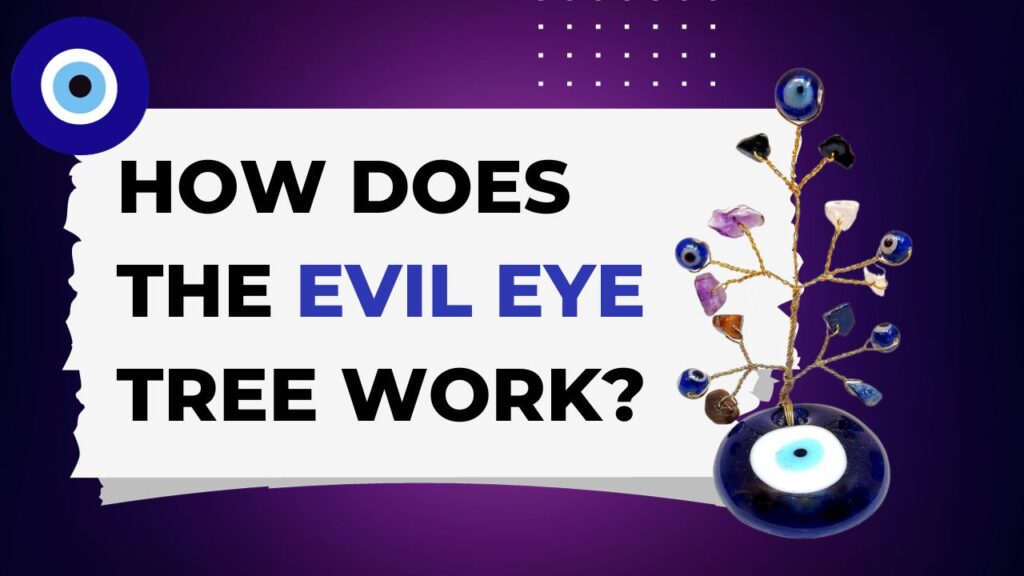
Warding Off the Evil Eye: The Fascinating World of the Evil Eye Tree
Throughout history, cultures around the world have developed a wide array of beliefs and practices to protect themselves from the malevolent gaze of the “evil eye.” One such practice involves the use of the “evil eye tree,” a powerful talisman believed to ward off this sinister curse. In this blog, we will explore the origins, significance, and global variations of the evil eye tree.
The Mysterious Origins of the Evil Eye
The concept of the evil eye is deeply rooted in human history. It can be traced back to ancient civilizations, including the Greeks and Romans, who believed that certain individuals possessed the power to cast a malevolent gaze that could bring misfortune or harm to others. In response to this belief, protective charms and amulets were developed to counteract the evil eye’s effects.
Enter the Evil Eye Tree
The evil eye tree, often called a “Nazar Boncugu” in Turkish, is a popular protective amulet used in many parts of the world. It typically consists of a glass or ceramic eye-shaped ornament with concentric blue and white circles, resembling an eye. The blue and white color combination is believed to be particularly effective in deflecting the evil eye, as these colors are thought to symbolize purity and positive energy.
How Does the Evil Eye Tree Work?
The evil eye tree is believed to operate in one of two ways, depending on cultural interpretations. In some cultures, it absorbs the negative energy directed at the owner, serving as a sacrificial buffer. Others believe it reflects the malevolent gaze, sending it back to the sender and protecting the person or property it guards. Regardless of the mechanism, the evil eye tree is thought to safeguard against envy, malice, and negative intentions.
Variations of the Evil Eye Tree
The evil eye tree can take various forms and can be found in different parts of the world, each with its unique variations and cultural significance:
Hamsa Hand: The Hamsa, also known as the “Hand of Fatima,” is a popular symbol in Middle Eastern and North African cultures. It combines the evil eye motif with an open hand and often features an eye in its palm. The Hamsa is believed to protect against not only the evil eye but also general misfortune.
Blue Beads and Charms: Blue beads and charms, sometimes strung together in necklaces or bracelets, are used as protection against the evil eye in many Mediterranean and Middle Eastern cultures. These beads can be worn as jewelry or hung in homes and vehicles.
Amulets and Pendants: Many cultures feature evil eye amulets and pendants, which can be worn as jewelry or displayed in homes and businesses. They serve as a constant reminder of the protection they offer.
Tree Ornaments: In Turkey and Greece, evil eye trees are often hung on the branches of trees to protect gardens and homes. These eye-shaped ornaments sway in the wind, supposedly breaking the curse of the evil eye before it can harm the prop

Global Adoption and Adaptation
The evil eye tree’s popularity has transcended borders, making it a globally recognized symbol of protection. In different cultures, it has been incorporated into various everyday objects, including jewelry, clothing, and home decor. This widespread adoption has led to unique interpretations of its significance and meaning in different regions.
Turkey: In Turkey, the Nazar Boncugu is ubiquitous. It can be found in homes, cars, offices, and on clothing. Many Turkish people believe it’s essential to protect against the evil eye, which is believed to cause unexpected accidents or illnesses.
Greece: In Greece, the Mati, or “evil eye,” is a common symbol in both jewelry and home decorations. It is believed to protect against envious glances and negative energy, ensuring good luck and prosperity.
Middle East and North Africa: The Hamsa hand is especially prevalent in these regions, often combined with the evil eye to provide double protection. It is a prominent symbol in both jewelry and wall decor, believed to guard against ill-wishing and evil spirits.
Western World: As globalization has brought cultures closer together, the evil eye tree has also gained popularity in the Western world. People from all walks of life have embraced it as a stylish and meaningful accessory, often without an in-depth understanding of its cultural origins.
In Conclusion
The evil eye tree is a testament to the enduring power of cultural beliefs and practices. It unites people from diverse backgrounds, transcending geographic and cultural boundaries. Whether you see it as a decorative ornament or a genuine protective charm, the evil eye tree continues to fascinate, inspire, and connect people worldwide, serving as a symbol of hope, positivity, and unity in a world where we all seek protection from the unseen forces of negativity and envy.
